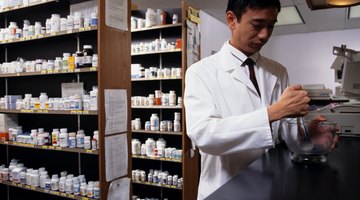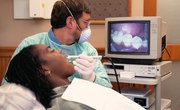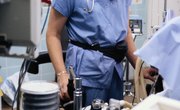Pharmacists specialize in dispensing medication and advising patients and health-care workers on dosages -- the job employs math every day. Although there's no pre-pharmacy degree -- and a bachelor's degree isn't required to enter pharmacy school -- certain courses are required to apply. The Pharmacy College Admission Test contains a Quantitative Ability section that includes mathematical questions. Some programs use a cumulative grade point average in math and science as part of the admission requirements.
College Algebra
Upon admission, students are sometimes placed into college algebra, the introductory undergraduate mathematics course. This course covers the properties and graphs of algebraic functions, and includes equalities and inequalities. The Quantitative Ability section of the PCAT contains questions pertaining to these concepts and their applications. Many times it can serve as a good review for the more advanced required coursework such as calculus or pre-calculus.
Pre-Calculus
Depending on the student's math placement, a course in pre-calculus may be required before taking college calculus. The course emphasizes the concept of the function in different areas, including the graphing and algebra of functions. A solid pre-calculus foundation and review is important to continue on to calculus. In addition, the American Association of Colleges of Pharmacy website states that pre-calculus is one of the topics on the test.
Calculus
Calculus is the study of change and relationships, which is useful in pharmacy research. According to the AACP website, the main concepts of calculus will be on the Quantitative Ability section of the PCAT. In addition, a large number of pharmacy schools require introductory physics courses before admission, and most physics courses are calculus-based and have calculus as a prerequisite. Some pharmacy schools accept a calculus applications course as well as the introduction to calculus course for life sciences and math majors. Check with each program for its specific calculus requirements.
Statistics
Statistics is an essential course for future pharmacy students, as the collection and analysis of data and hypothesis testing are used often in pharmaceutical research and applications. Most pharmacy schools require either an introductory statistics course, psychological statistics, or a biostatistics course to fulfill the requirement. According to the AACP website, questions on probability and statistics will be on the PCAT as well.
Related Articles
References
Writer Bio
Gale Marie Thompson's work has been published in "Denver Quarterly," "Los Angeles Review" and "Best New Poets 2012." Thompson holds a BA in English and creative writing from the College of Charleston, a MFA from the University of Massachusetts Amherst, and is working on a PhD at the University of Georgia.











